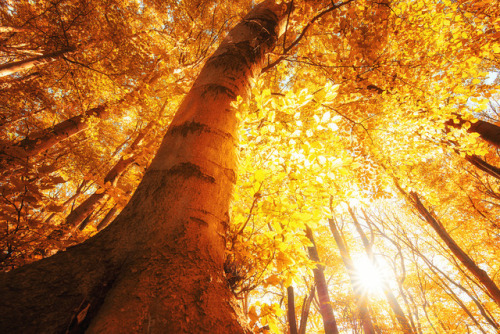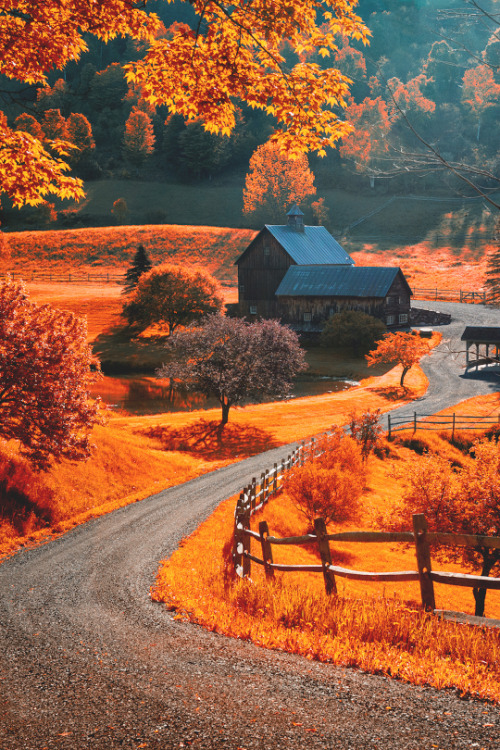🔭🌃🌌
🔭🌃🌌
Characteristics of the moons of Saturn
Saturn has 62 natural satellites. Here are some features of some of its moons, with mountains, valleys, and striking marks on their surfaces, often marked by asteroid bombardments causing small, huge craters.

Iapetus - Equatorial ridge
Iapetus’s equatorial ridge was discovered when the Cassini spacecraft imaged Iapetus on 31 December 2004. Peaks in the ridge rise more than 20 km above the surrounding plains, making them some of the tallest mountains in the Solar System. The ridge forms a complex system including isolated peaks, segments of more than 200 km and sections with three near parallel ridges.

Tethys - Odysseus crater
Odysseus is the largest crater on Saturn’s moon Tethys. It is 445 km across, more than 2/5 of the moon’s diameter, and is one of the largest craters in the Solar System.

Tethys - Ithaca Chasma
Ithaca Chasma is a valley (graben) on Saturn’s moon Tethys, named after the island of Ithaca, in Greece. It is up to 100 km wide, 3 to 5 km deep and 2,000 km long, running approximately three-quarters of the way around Tethys’ circumference, making it one of the longer valleys in the Solar System. Ithaca Chasma is approximately concentric with Odysseus crater.

Tethys - Red arcs
Unusual arc-shaped, reddish streaks cut across the surface of Saturn’s ice-rich moon Tethys in this enhanced-color mosaic. The red streaks are narrow, curved lines on the moon’s surface, only a few miles (or kilometers) wide but several hundred miles (or kilometers) long.

Rhea - Inktomi crater
Inktomi, also known as The Splat, is a prominent rayed impact crater 47.2 kilometres (29.3 mi) in diameter located in the southern hemisphere of Saturn’s moon Rhea.

Mimas - Herschel Crater
Herschel is a huge crater in the leading hemisphere of the Saturnian moon Mimas, on the equator at 100° longitude. It is so large that astronomers have expressed surprise that Mimas was not shattered by the impact that caused it. It measures 139 kilometres (86 miles) across, almost one third the diameter of Mimas. If there were a crater of an equivalent scale on Earth it would be over 4,000 km (2,500 mi) in diameter – wider than Canada – with walls over 200 km (120 mi) high.

Enceladus - Surface with fractures
Close up of one of the ‘tiger stripes” or fissures called Baghdad Sulcus. Both heat and occasional geysers issue from this formidable crack. Some of the material coating the landscape may be snow condensed from vapor. This closeup of the surface of Enceladus on November 21, 2009, viewed from approximately 1,260 miles (2,028 kilometers) away.

Dione - Contrasts
This image from NASA’s Cassini spacecraft shows a part of Dione’s surface that is covered by linear, curving features, called chasmata. One possibility is that this stress pattern may be related to Dione’s orbital evolution and the effect of tidal stresses over time. This view looks toward the trailing hemisphere of Dione.
Learn more: Iapetus, Tethys, Rhea, Mimas, Enceladus and Dione.
Images: NASA/JPL-Caltech
More Posts from Monstrous-mind and Others


Der Baum im Herbstlicht & Das Leuchten des Waldes by Oliver Henze
🍁🍂🎃🍂🍁



Autumn 2024 is almost here!
What’s Up For September 2018?
Outstanding views Venus, Jupiter, Saturn and Mars with the naked eye!

You’ll have to look quickly after sunset to catch Venus. And through binoculars or a telescope, you’ll see Venus’s phase change dramatically during September - from nearly half phase to a larger thinner crescent!

Jupiter, Saturn and Mars continue their brilliant appearances this month. Look southwest after sunset.

Use the summer constellations help you trace the Milky Way.

Sagittarius: where stars and some brighter clumps appear as steam from the teapot.

Aquila: where the Eagle’s bright Star Altair, combined with Cygnus’s Deneb, and Lyra’s Vega mark the Summer Triangle.

Cassiopeia, the familiar “w”- shaped constellation completes the constellation trail through the Summer Milky Way. Binoculars will reveal double stars, clusters and nebulae.

Between September 12th and the 20th, watch the Moon pass from near Venus, above Jupiter, to the left of Saturn and finally above Mars!

Both Neptune and brighter Uranus can be spotted with some help from a telescope this month.

Look at about 1:00 a.m. local time or later in the southeastern sky. You can find Mercury just above Earth’s eastern horizon shortly before sunrise. Use the Moon as your guide on September 7 and 8th.

And although there are no major meteor showers in September, cometary dust appears in another late summer sight, the morning Zodiacal light. Try looking for it in the east on moonless mornings very close to sunrise. To learn more about the Zodiacal light, watch “What’s Up” from March 2018.

Watch the full What’s Up for September Video:
There are so many sights to see in the sky. To stay informed, subscribe to our What’s Up video series on Facebook.
Make sure to follow us on Tumblr for your regular dose of space: http://nasa.tumblr.com

source
🍂🍁🎃📚📓

🍂🍁🌄

🍁🍂🌄

Autumn sky
🛰️🌌🪐☄️🍂🍁

Hubble Sees Possible Runaway Black Hole Creating a Trail of Stars
There's an invisible monster on the loose, barreling through intergalactic space so fast that if it were in our solar system, it could travel from Earth to the Moon in 14 minutes. This supermassive black hole, weighing as much as 20 million Suns, has left behind a never-before-seen 200,000-light-year-long "contrail" of newborn stars, twice the diameter of our Milky Way galaxy. It's likely the result of a rare, bizarre game of galactic billiards among three massive black holes.
The black hole lies at one end of the column, which stretches back to its parent galaxy. There is a remarkably bright knot of ionized oxygen at the outermost tip of the column. Researchers believe gas is probably being shocked and heated from the motion of the black hole hitting the gas, or it could be radiation from an accretion disk around the black hole. "Gas in front of it gets shocked because of this supersonic, very high-velocity impact of the black hole moving through the gas. How it works exactly is not really known," said van Dokkum.
This intergalactic skyrocket is likely the result of multiple collisions of supermassive black holes. Astronomers suspect the first two galaxies merged perhaps 50 million years ago. That brought together two supermassive black holes at their centers. They whirled around each other as a binary black hole.
Credit: NASA
🐈🐏🐱🌄🍂🍁
“I woolly wuv your wool”

Puraten10 on Instagram
-
 snickeringmacs reblogged this · 5 months ago
snickeringmacs reblogged this · 5 months ago -
 poor-life-choices-simulator liked this · 6 months ago
poor-life-choices-simulator liked this · 6 months ago -
 skogenoghavet reblogged this · 6 months ago
skogenoghavet reblogged this · 6 months ago -
 aestheticvoyagersworld liked this · 7 months ago
aestheticvoyagersworld liked this · 7 months ago -
 tachvintlogic reblogged this · 7 months ago
tachvintlogic reblogged this · 7 months ago -
 xploseof reblogged this · 8 months ago
xploseof reblogged this · 8 months ago -
 cerberus253 reblogged this · 9 months ago
cerberus253 reblogged this · 9 months ago -
 qualityblizzardcreation reblogged this · 9 months ago
qualityblizzardcreation reblogged this · 9 months ago -
 infinitemonkeytheory reblogged this · 9 months ago
infinitemonkeytheory reblogged this · 9 months ago -
 journeythroughtherain reblogged this · 9 months ago
journeythroughtherain reblogged this · 9 months ago -
 6-mar-6-cielo-6 liked this · 9 months ago
6-mar-6-cielo-6 liked this · 9 months ago -
 ichigoohinatsuma liked this · 9 months ago
ichigoohinatsuma liked this · 9 months ago -
 morebearsinheavenandearth reblogged this · 9 months ago
morebearsinheavenandearth reblogged this · 9 months ago -
 crybabystoat liked this · 9 months ago
crybabystoat liked this · 9 months ago -
 instantezra reblogged this · 9 months ago
instantezra reblogged this · 9 months ago -
 sagesilentfire reblogged this · 9 months ago
sagesilentfire reblogged this · 9 months ago -
 gatsbylafitte liked this · 9 months ago
gatsbylafitte liked this · 9 months ago -
 teeethbrush liked this · 9 months ago
teeethbrush liked this · 9 months ago -
 archaeologist1 liked this · 9 months ago
archaeologist1 liked this · 9 months ago -
 erbath liked this · 9 months ago
erbath liked this · 9 months ago -
 xploseof liked this · 9 months ago
xploseof liked this · 9 months ago -
 whateverthewiz reblogged this · 9 months ago
whateverthewiz reblogged this · 9 months ago -
 whateverthewiz liked this · 9 months ago
whateverthewiz liked this · 9 months ago -
 chica-algo-timida liked this · 9 months ago
chica-algo-timida liked this · 9 months ago -
 glistenandgrow liked this · 9 months ago
glistenandgrow liked this · 9 months ago -
 rideroftherange liked this · 9 months ago
rideroftherange liked this · 9 months ago -
 turian reblogged this · 9 months ago
turian reblogged this · 9 months ago -
 papalomo reblogged this · 9 months ago
papalomo reblogged this · 9 months ago -
 papalomo liked this · 9 months ago
papalomo liked this · 9 months ago -
 cancel12 liked this · 9 months ago
cancel12 liked this · 9 months ago -
 myusernameisstolen liked this · 9 months ago
myusernameisstolen liked this · 9 months ago -
 definitelynotdabi reblogged this · 9 months ago
definitelynotdabi reblogged this · 9 months ago -
 laceandsuch liked this · 9 months ago
laceandsuch liked this · 9 months ago -
 fatherizzyisms liked this · 9 months ago
fatherizzyisms liked this · 9 months ago -
 artemiese liked this · 9 months ago
artemiese liked this · 9 months ago -
 -theweightoftheworld liked this · 9 months ago
-theweightoftheworld liked this · 9 months ago -
 krowbat reblogged this · 9 months ago
krowbat reblogged this · 9 months ago -
 krowbat liked this · 9 months ago
krowbat liked this · 9 months ago -
 joao1811 liked this · 9 months ago
joao1811 liked this · 9 months ago -
 yeefhan liked this · 9 months ago
yeefhan liked this · 9 months ago -
 stargazinglesbian reblogged this · 9 months ago
stargazinglesbian reblogged this · 9 months ago -
 quiggsy reblogged this · 9 months ago
quiggsy reblogged this · 9 months ago -
 quiggsy liked this · 9 months ago
quiggsy liked this · 9 months ago -
 frizzyanya reblogged this · 9 months ago
frizzyanya reblogged this · 9 months ago
My ambition is handicapped by laziness. -C. Bukowski Me gustan las personas desesperadas con mentes rotas y destinos rotos. Están llenos de sorpresas y explosiones. -C. Bukowski. I love cats. Born in the early 80's, raised in the 90's. I like Nature, Autumn, books, landscapes, cold days, cloudy Windy days, space, Science, Paleontology, Biology, Astronomy, History, Social Sciences, Drawing, spending the night watching at the stars, Rick & Morty. I'm a lazy ass.
222 posts